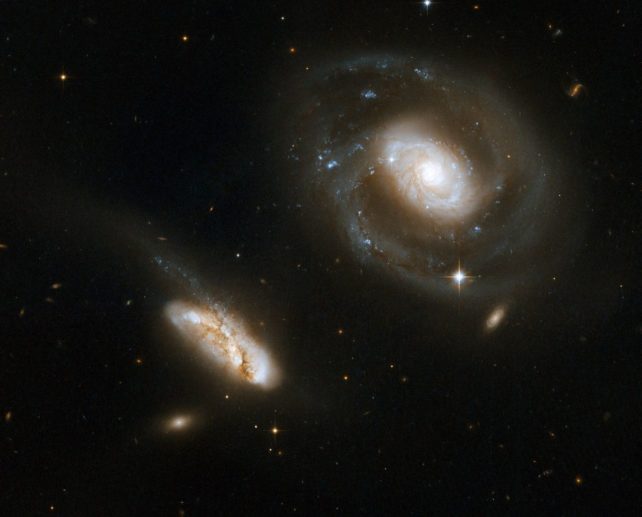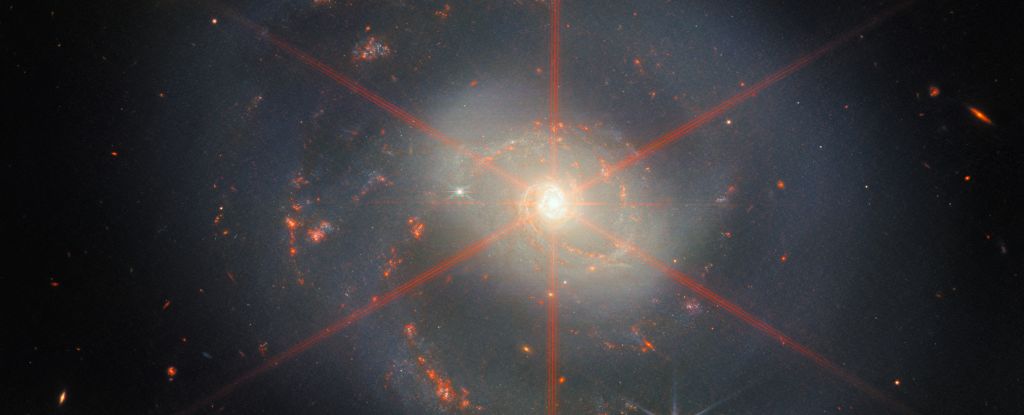The James Webb Space Telescope has just snapped a new sparkling glamor image perfect enough for the Christmas tree to a spiral galaxy 230 million light-years away.
Although the galaxy has the rather unspectacular name of NGC 7469, it was an intriguing subject to study.
JWST has studied NGC 7469 as part of a survey to understand star formation, the growth of supermassive particles black holesand the way galaxies gravitationally interact and merge across the vast chasms of space and time.
NGC 7469 is also quite special. It has elegant, beautiful spiral arms, which we can see in their full extent thanks to an orientation error: the plane of the galactic plane faces us almost directly, giving us a breathtaking view of the structure of the galaxy.
The galaxy also has a very bright center, especially when it comes to infrared radiation.
This is because the supermassive black hole around which the entire galaxy orbits, is active: it is surrounded by material that falls or accumulates on the black hole, a process that produces much light as gravity and friction heat the material, causing it to glow.
At a distance of about 1,500 light-years from NGC 7469’s galactic center is another bright ring of frenzied star-forming activity known as the Starburst. Because we can see the galaxy so clearly, scientists can study it to better understand the connection between a starburst ring and an active galaxy core.
Like the galactic core, starburst rings shine brightly in the infrared, the wavelength range at which JWST views the Universe in such spectacular detail. His observations of galaxies like NGC 7469 should provide unprecedented insights into these processes and how they are connected.
Scientists have already found new star-forming clusters and direct evidence that dust is being destroyed very close to the galactic core – showing the activity is affecting the galaxy around it.
They also found that highly ionized, diffuse atomic gas is pouring out of the galactic center at about 4 million miles per hour. This wind is shaken, a current paper, which is currently in the preprint, are not affect the starburst ring.

Another galaxy is just off the lower left corner of JWST’s image. This is IC 5283, and it’s in a gravitational dance with NGC 7469. Collectively, the two galaxies are known as Arp 298. At the edge of NGC 7469, closest to IC 5283, you can see enhanced bright red regions; That’s likely because the larger galaxy is depriving its smaller companion of nourishing star-forming gas.
The starburst and possibly even the activity of the galactic core in NGC 7469 are believed to be the result of the interaction between the two galaxies.
The large six-pointed feature that dominates the image is Diffraction tips from JWST, an artifact created by the physical structure of the telescope. So it’s not actually real… but it sure looks pretty.
You can download background size versions of the new image from the ESA JWST website.





